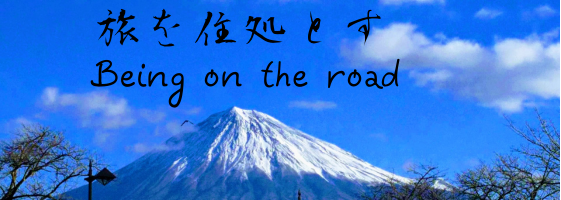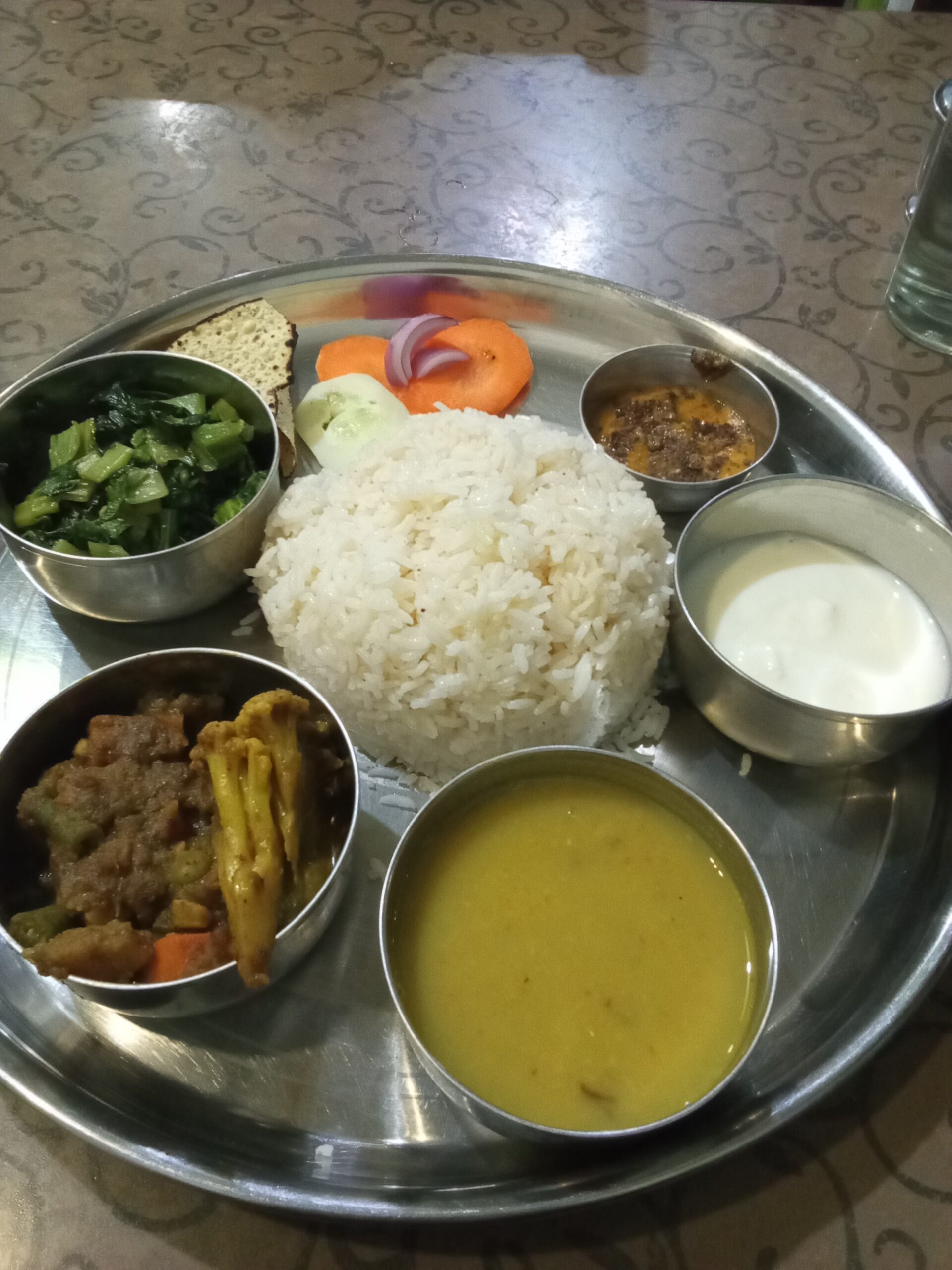Are you familiar with Dal Bhat, Nepal’s national dish? It’s a staple food in Nepal, but at Indian-Nepalese restaurants in Japan and even at tourist-oriented establishments in Nepal, it often appears as a lavish set meal, indistinguishable from a curry thali. Having visited Nepal 30 years ago and being treated to homemade Dal Bhat at a local family’s home, I made it my mission this time to seek out more authentic, local Dal Bhat experiences. Prices in this article are as of March 2024.
Dal Bhat in Kathmandu and Pokhara
The photo above shows Dal Bhat from a small alleyway restaurant on the outskirts of the Thamel district. The side dishes being served in small metal bowls is characteristic of tourist-oriented places. The price at this restaurant was 250 Nepalese Rupees (approximately 275 JPY). This was my first dinner in Nepal, so I wasn’t familiar with the local prices yet, but considering it was in the Thamel area, I think it was relatively cheap.
I searched online for even cheaper, more local places and found a few. I decided to try one that was particularly recommended. This place was also in an alley. The photo on the right shows the Dal Bhat that came when I ordered it. Here, too, the side dishes were served in metal containers. The price was 300 Rupees (330 JPY), which was even higher than the previous place. That day, I felt that online information wasn’t always reliable. Travel blogs tend to feature rather nice-looking establishments, so it’s frustratingly difficult to find truly local spots.
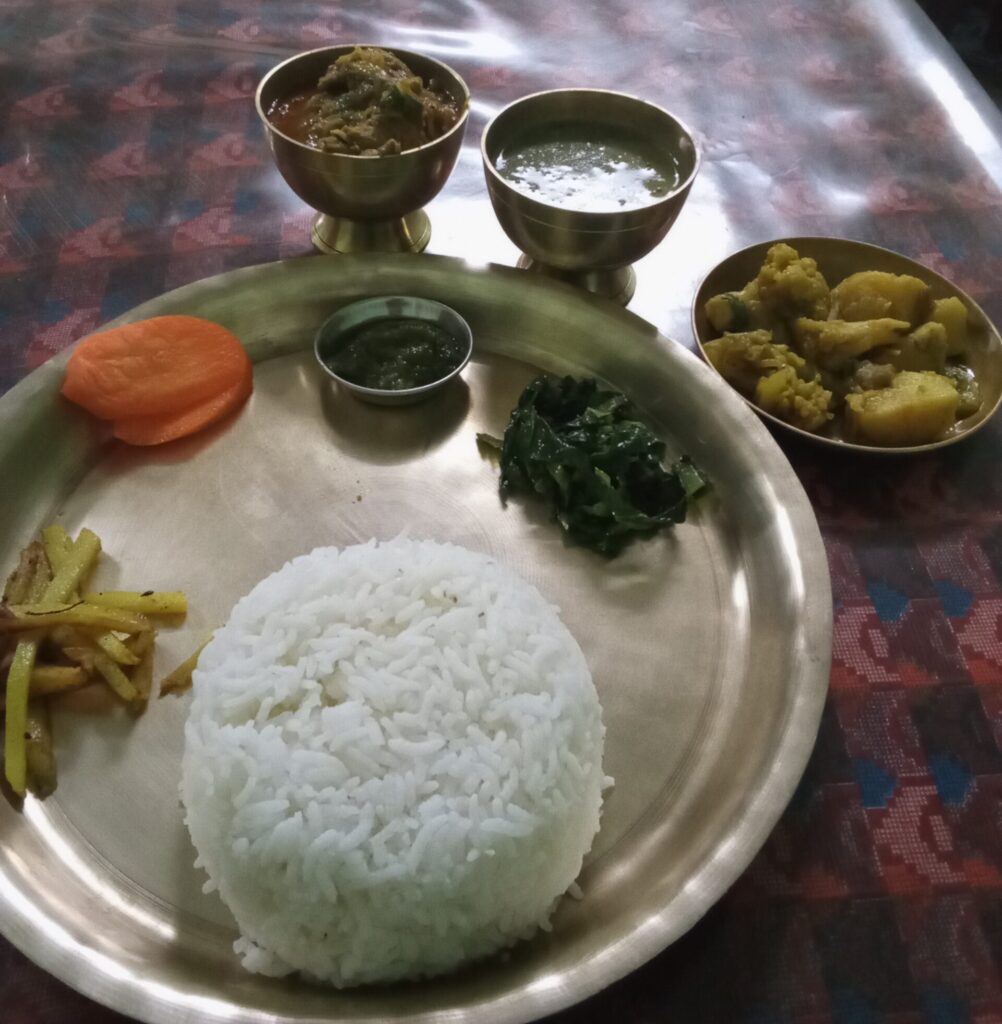
After walking back and forth between Kathmandu’s Thamel district and Durbar Square every day, searching for local food places, I finally found a Dal Bhat restaurant that only locals seemed to frequent. The place had no name and wasn’t on any map. Its appearance was such that a foreign traveler might hesitate to enter. I immediately ordered Dal Bhat, and the photo on the left shows what I received. The main Dal soup, bean curry, spicy sauce, and tarkari (side dishes) were served directly on the plate, without the metal bowls used in tourist-oriented restaurants, which made it feel truly local. The price was 150 Rupees (approximately 165 JPY). The price was good too!
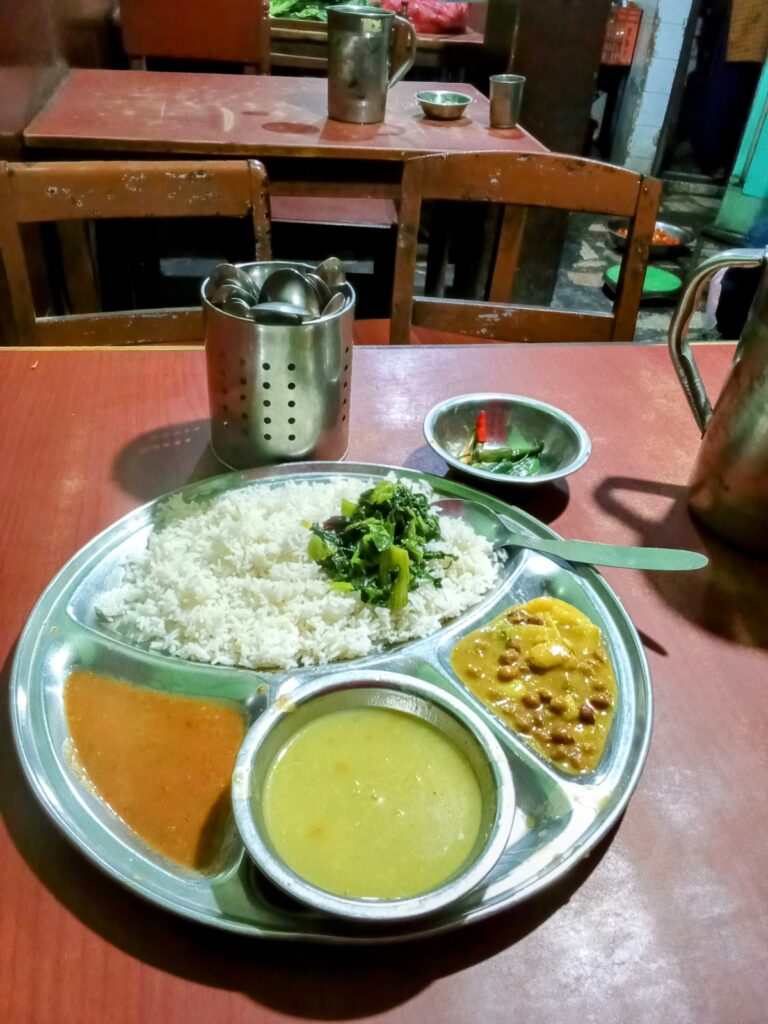
The last Dal Bhat I had in Kathmandu is pictured on the right. This restaurant was in the heart of the Thamel district, but perhaps because it was on the second floor of a building, it had few customers and the presentation was also local-style. This was a family-run establishment, and the elementary school-aged daughter was studying next to my table or playing with me, which was very enjoyable. The price was 250 Rupees. For a place in the center of Thamel, I suppose that’s reasonable.
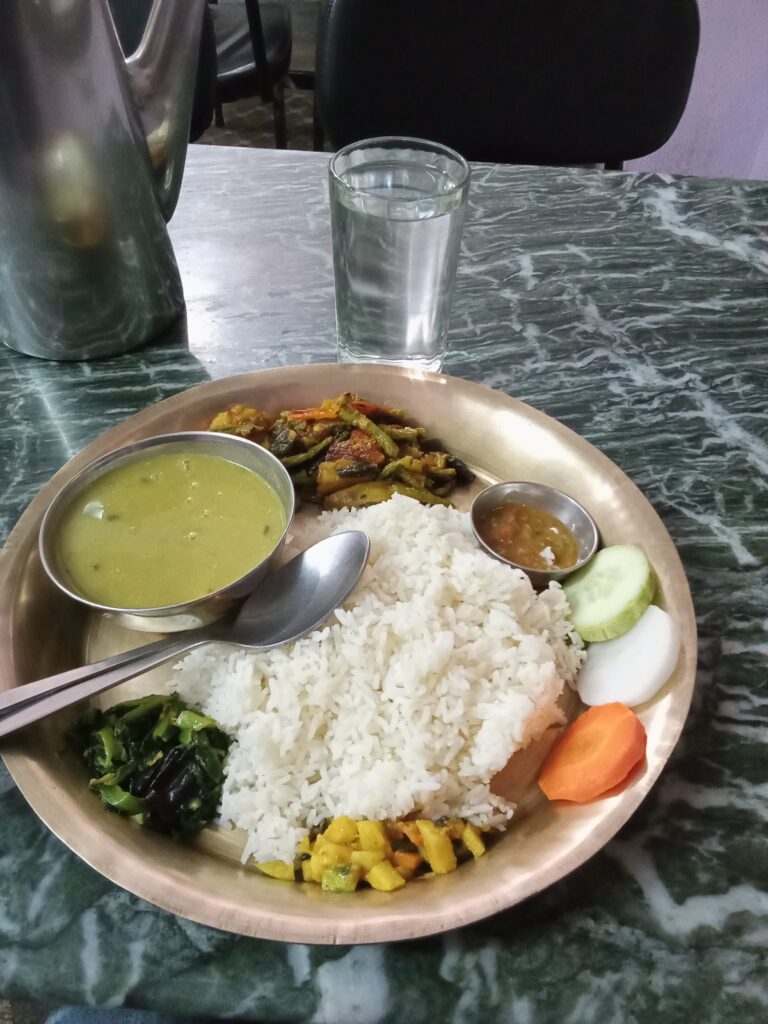
Now, for the restaurants in Pokhara. Pokhara is entirely a tourist city, so most eateries cater to tourists. Still, if you walk around, you can find places with local prices. The first Dal Bhat I had in Pokhara is shown on the left. However, in Pokhara, it’s mostly served under the name “Nepali Thali Set” rather than “Dal Bhat.” The price here was 150 Rupees.
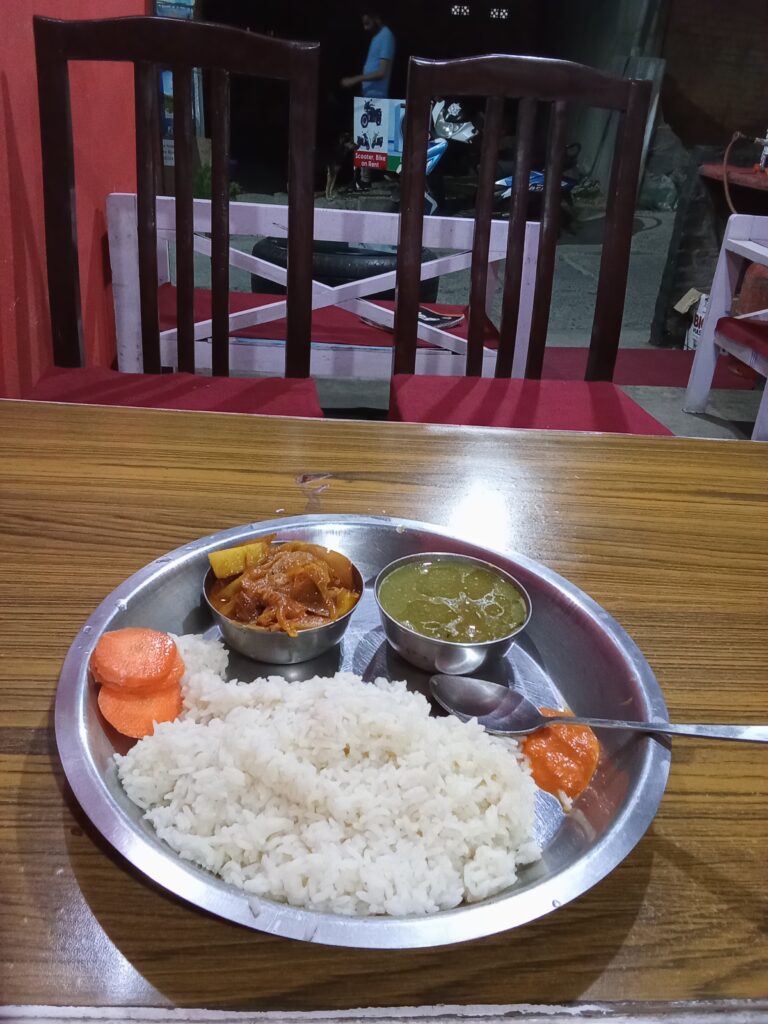
The last restaurant is a super popular lunch-only spot tucked away from Pokhara’s main street. When it opens, a sign appears, and customers pour in. Here too, it was called “Nepali Thali,” not Dal Bhat. Even though many customers come, this is the only menu item. This place is popular because of its good location and cheap prices. This vegetarian (veg) thali was only 120 Rupees. I even went twice during my stay in Pokhara.
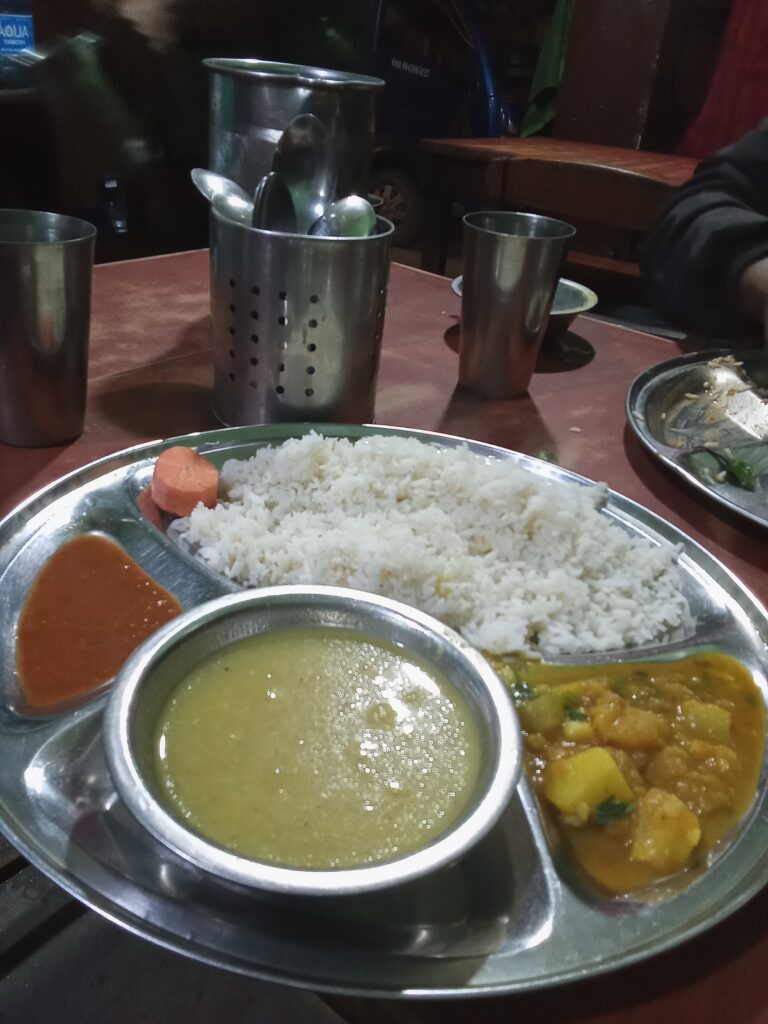
Can Dal Bhat Be Refilled Infinitely?
A characteristic feature of Dal Bhat is that the rice, sauce, and side dishes can be refilled. Even though the initial serving size is not small, when you’ve eaten most of it, the staff will ask if you want more. If you say yes, they will refill your rice, Dal sauce, bean curry, and pickles. When serving the rice from a large container onto your plate, they’ll keep adding it, asking, “How much? Is this enough?”
Just when you think you’ve finished your refill, they’ll ask if you want another. I refilled twice at most, but eating Dal Bhat for lunch meant I didn’t need dinner that day, or even lunch the next day, because I had eaten so much. If you go to Nepal, I highly recommend trying the famous Dal Bhat at a local restaurant.
